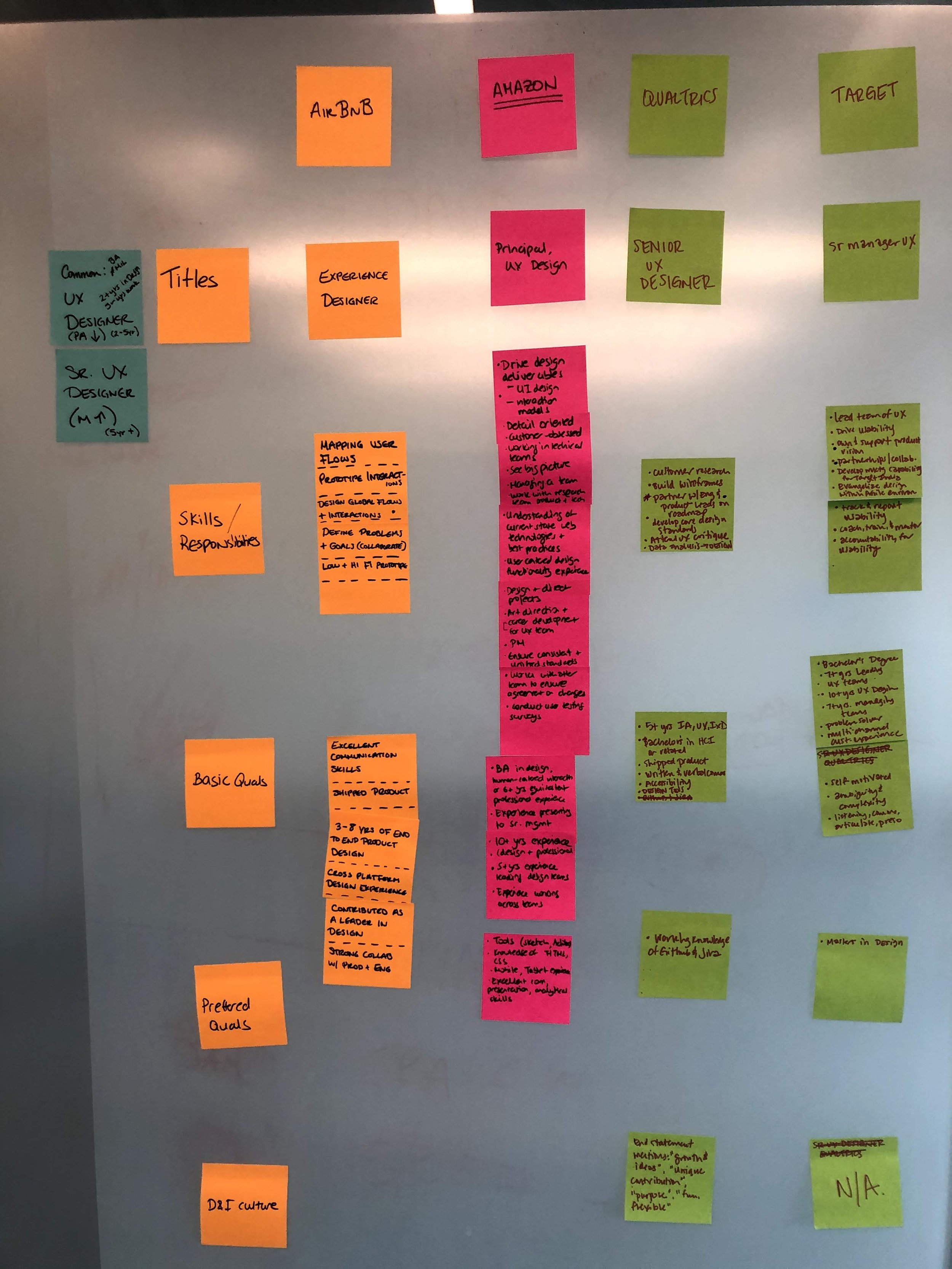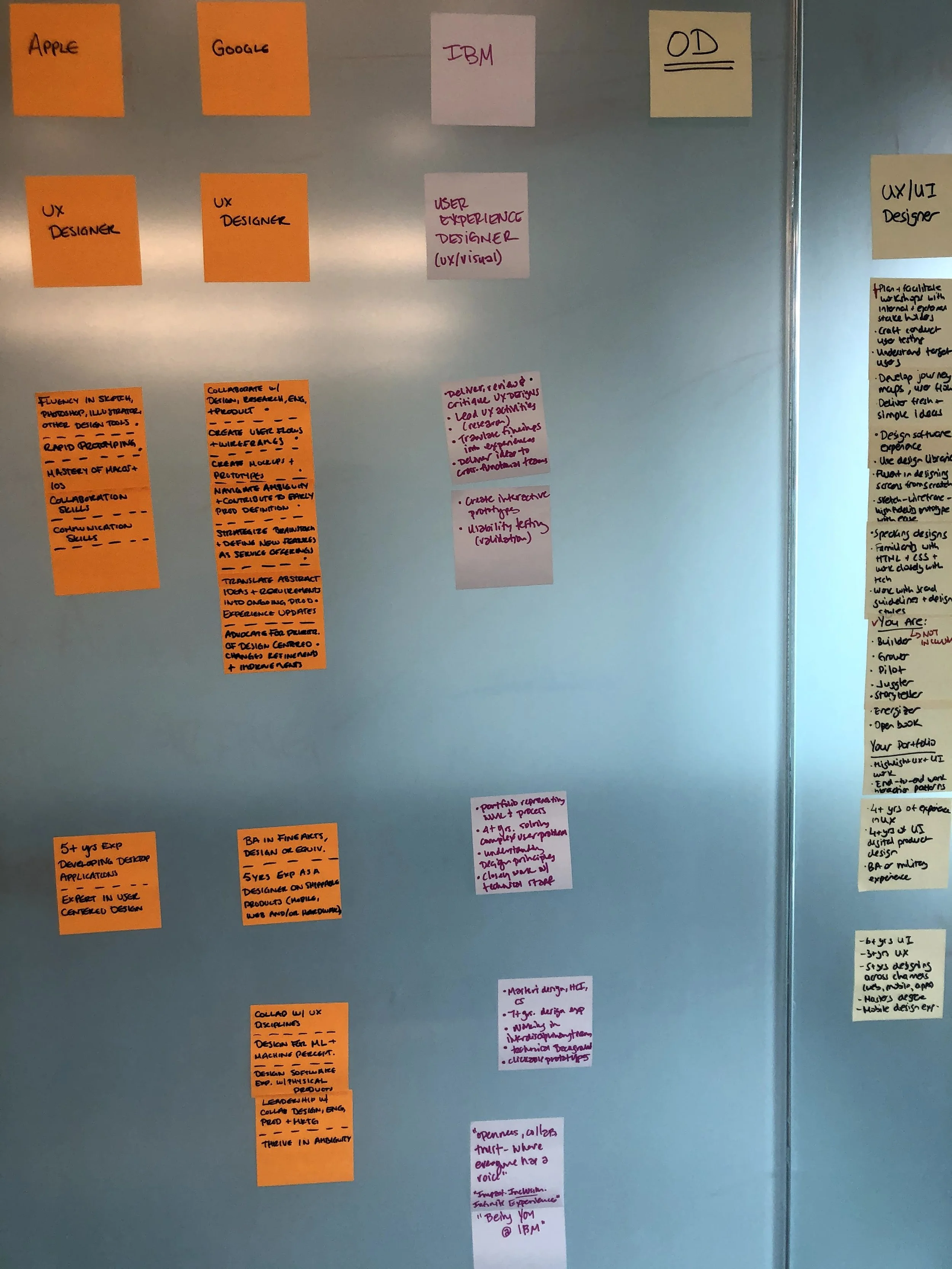Case Study No. 2
Equitable Job Descriptions
Background
During my tenure at Capital One, the design team experienced significant growth. After a year of rapid expansion, we recognized that generalized job descriptions were insufficient for attracting candidates with specialized skills in areas such as content design, AI/ML, data science, and research.
I engaged in several initiatives centered on diversity, equity, and inclusion, which provided an opportunity to enhance our recruitment and hiring processes, making them more inclusive and equitable for prospective team members.
Strategic Approach
Our strategic approach was straightforward: we evaluated our existing job descriptions to identify and eliminate barriers, such as unnecessary educational requirements.
This effort aimed to broaden our appeal to a diverse applicant pool while still focusing on the specialized skills we sought. Additionally, we expanded our project scope to include interviews with designers at various levels and specialties, both internally and externally. This helped us gain a comprehensive understanding of the current landscape of experience design in the industry.
Goals
The goals outlined below, identified in partnership with the design leadership team, ensured that my evaluation covered all areas of the business from a design and business lens as well as our internal partners, tools, and processes were equitably accounted for and prioritized appropriately.
Rewrite job descriptions to remove barriers related to higher education requirements, facilitating promotions for associates with practical experience.
Align job descriptions with industry trends, advancements, and innovations.
Collaborate with designers across all levels, from associates to senior directors, to identify commonalities in responsibilities, expertise, expectations, and growth trajectories.
Ensure compliance with HR, recruiting, and legal standards.
Key Strategies for Success
Discovery: Conduct thorough research and engage with designers to understand their daily responsibilities and define the future of experience design at Capital One.
Collaboration with Partners: Involve HR, legal, and recruiting teams in the project to ensure they can provide feedback and approvals as primary stakeholders.
Standardization: Establish consistent language that is clear and accessible, highlighting differences between levels and progression opportunities.
Outcome
This initiative significantly improved both the quantity and quality of applicants. Designers felt more confident as they had a role in shaping how their work was represented. This engagement led to increased visibility for job postings across social networks and at recruiting events.
I accomplished these goals by:
Conducting extensive research to refine terminology and ensure clarity for candidates, recruiters, and HR.
Performing competitive analysis on direct and indirect competitors regarding role comparisons, organizational structures, responsibilities, and future design trends.
Collaborating closely with partners and designers to ensure accurate representation of roles while allowing them to influence the process.
Ensuring compliance with legal standards and provided training for recruiters on updated role nuances to bolster their confidence during candidate interactions
Lessons Learned
Reflecting on the initiative to create equitable job descriptions at Capital One, several key lessons emerged that can inform future projects:
Engagement is Crucial: Actively involving partners and designers throughout the process proved beneficial. Their participation not only fostered a sense of ownership but also enhanced their understanding of the project's objectives and outcomes.
Depth of Research Matters: The competitive analysis, initially intended as a straightforward comparison, revealed deeper insights into industry nuances and organizational structures. This thorough exploration highlighted opportunities for upskilling and informed subsequent initiatives.
Focus on Continuous Improvement: While the project achieved its immediate goals, there is a recognition that further exploration into competitive analysis could have yielded additional insights. A more extensive evaluation of external trends may have facilitated strategic planning for future growth in a rapidly evolving industry.
These lessons underscore the importance of collaboration, thorough research, and adaptability in driving successful outcomes in recruitment and hiring practices.
What worked well:
Engaging partners and designers fostered appreciation for their involvement in understanding project goals and outcomes.
The competitive analysis revealed deeper insights into industry nuances and opportunities for upskilling.
What I could have done better:
Competitive Analysis: I could have delved deeper into competitive analysis. While I gathered sufficient information for this project, further external evaluation could have facilitated future-focused planning to support ongoing growth in a rapidly evolving industry.


